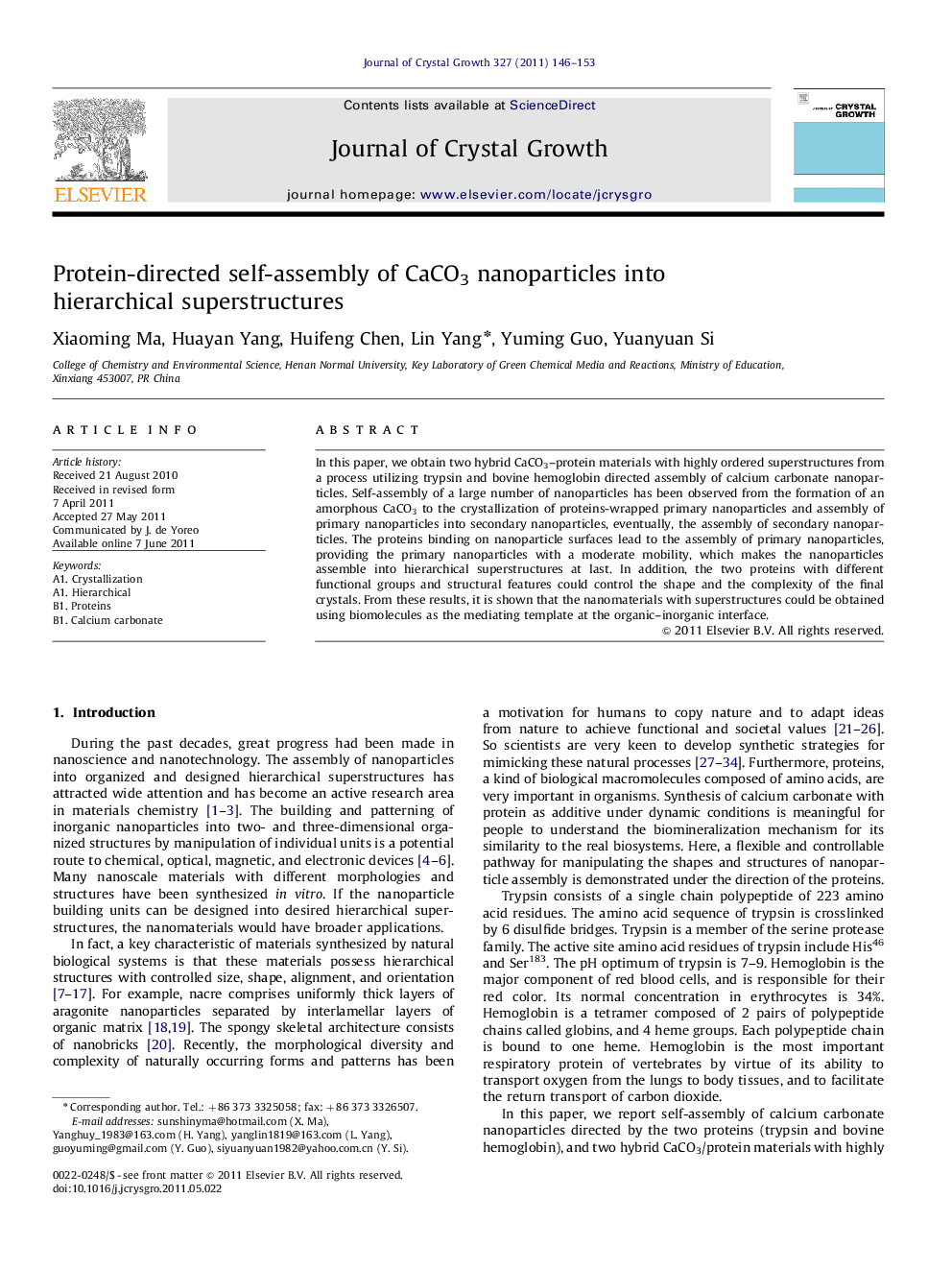| Article ID | Journal | Published Year | Pages | File Type |
|---|---|---|---|---|
| 1792166 | Journal of Crystal Growth | 2011 | 8 Pages |
In this paper, we obtain two hybrid CaCO3–protein materials with highly ordered superstructures from a process utilizing trypsin and bovine hemoglobin directed assembly of calcium carbonate nanoparticles. Self-assembly of a large number of nanoparticles has been observed from the formation of an amorphous CaCO3 to the crystallization of proteins-wrapped primary nanoparticles and assembly of primary nanoparticles into secondary nanoparticles, eventually, the assembly of secondary nanoparticles. The proteins binding on nanoparticle surfaces lead to the assembly of primary nanoparticles, providing the primary nanoparticles with a moderate mobility, which makes the nanoparticles assemble into hierarchical superstructures at last. In addition, the two proteins with different functional groups and structural features could control the shape and the complexity of the final crystals. From these results, it is shown that the nanomaterials with superstructures could be obtained using biomolecules as the mediating template at the organic–inorganic interface.
► Two hybrid CaCO3–protein materials with highly ordered superstructures are obtained by gas-diffused method. ► Self-assembly of a large number of nanoparticles has been observed. ► Proteins binding onto the nanoparticles surface provide the nanoparticles with a moderate mobility, which allows the reconstruction of the morphologies and structures of nanoparticles. ► Protein-directed inorganic crystals could be promising in life sciences for drug delivery, implantable microdevices, as well as for molecular electronics.
